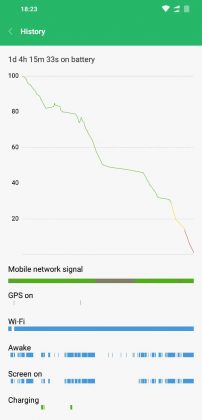When Xiaomi launched the Poco F1 smartphone a few weeks ago, it got a mixed reaction from the tech enthusiast.
Firstly, it is very commendable of Xiaomi to bring a smartphone with such great specifications at such a low price. You may already be aware that Xiaomi Poco F1 is the first smartphone to bring Snapdragon 845 Chipset under $300 smartphone.
It is practically impossible for any other company to do this, in the market where the companies like Oppo and Vivo and Samsung are still launching their smartphones with Snapdragon 450 in the similar price range.
Simply by looking at the specifications of the Poco F1, it is a no-brainer to recommend this Smartphone who is looking for a new one with the budget of $300 or Rs 21,000.
I mean, I was one of the first to get my hands on it, and I have been using it for the last few days. Even though the smartphone is far from perfect, I don’t find any of the issues in the Poco F1 a deal breaker.
And looking at the mixed reviews that god I thought it will do a review of it.
Short review: A power packed smartphone at a budget-friendly price, love the camera (especially the dual camera set up on the back), loved with the superfast User Experience, and loved the Battery.
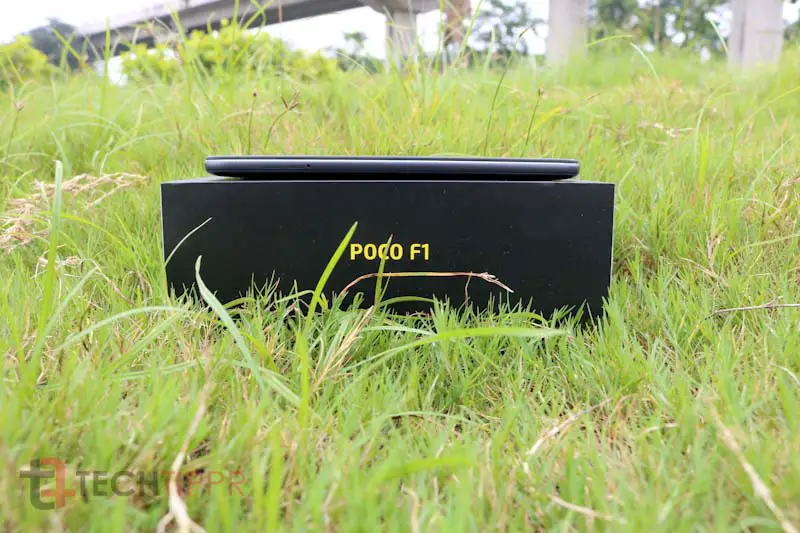
There is literally no Smartphone which is better than this in this similar price range at least for the next 6 months, maybe there will be something in the first quarter of 2019.
Long review: If the short review is not convincing enough, here is a longer one. I am not going to convince you to buy it, I will just share my own experience with a smartphone that I have used for a few days.
Let’s talk about the design
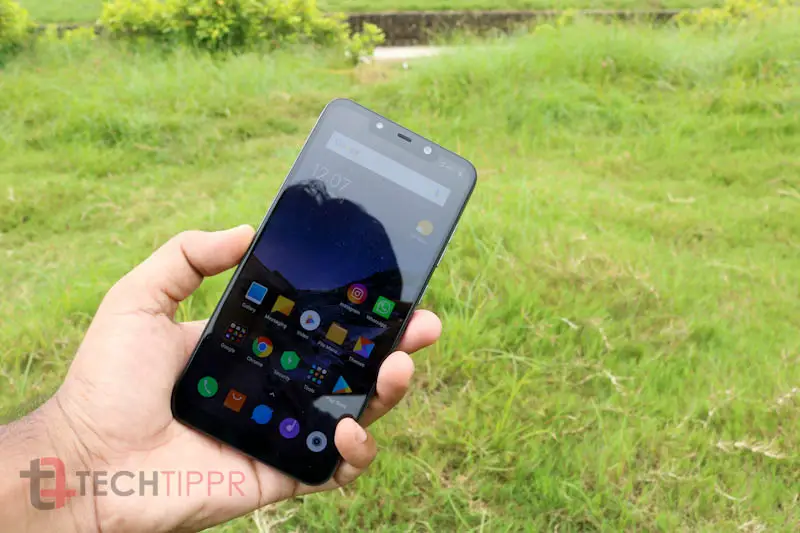
The Xiaomi Poco F1 smart is a 6.18 inch IPS LCD Screen with Full HD Display having1080 x 2246 pixels, 18.7:9 ratio (~403 ppi density)
There is a Speaker grill on the bottom and a USB Type C slot for charging and data transfer.
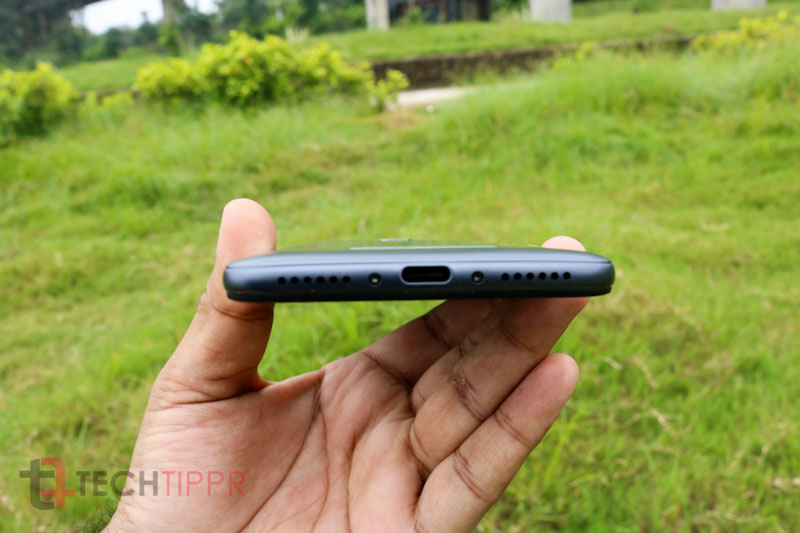
The other grill is there for the Mic and the 3.5mm Audio Jack has moved to the top, which, I think, is the best place for it, you’ll appreciate your earphones (which is not provided with the Phone) not getting damaged anymore.
There is a secondary mic on the top, for noise cancellation or recording audio in stereo, when you are recording videos or doing video calls.
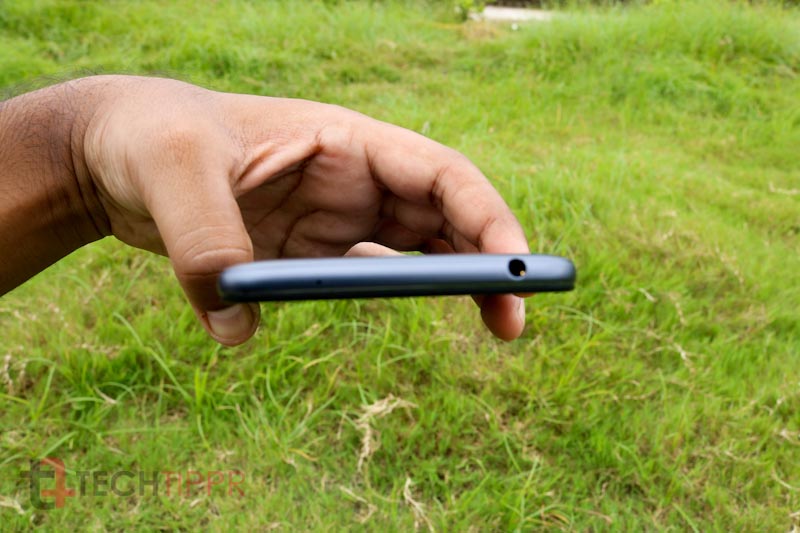
On the right-hand side, we have the volume rocker buttons and the power button placed appropriately like other Xiaomi smartphones.
On the left-hand side is the Hybrid Dual SIM slot. Hybrid means you can use 1 SIM slot for microSD, but considering the Xioami Poco F1 is available in 64GB, 128Gb and even 256GB, I don’t see anyone using it.
On the front, it’s all screen with a Notch, which houses the Infrared Sensor for Face Unlock, the Front Camera, the Earpiece, and the Proximity sensor.
We will talk more about the Notch in a moment, let’s first address the 12MP +5MP Dual Camera set up at the back along with the Finger Print Sensor placed vertically.
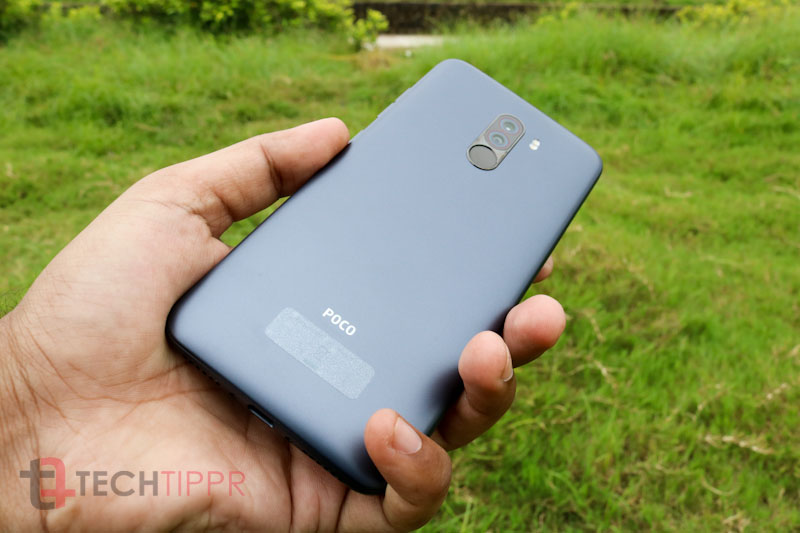
And then there is a Poco by Xioami branding at the bottom of the back.
To be honest, this was the only area I was not giving any points to the Poco F1 until I held the phone in my hand.
Few other reviews suggested that it is not that good looking, because of the polycarbonate body Unlike the metal body used in other flagship smartphones.
After looking at it physically, polycarbonate body is not that bad, some reviewers set the same thing about the Oppo real me1 but when I got it it wasn’t really bad at all.
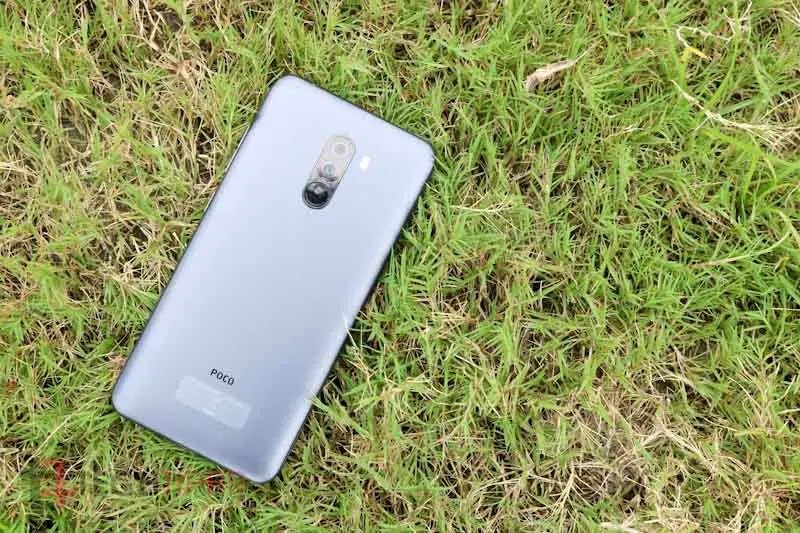
The plastic or the polycarbonate body is not a bad thing, firstly it’s not as heavy as metal, which makes the smartphone a little lighter, and also doesn’t let you feel the heat.
Another good thing about the polycarbonate body I came to realise is, it is best to have if you have a habit of handling your smartphone a little roughly.
The metal gets dent when you Drop your smartphone, but the plastic or the polycarbonate has higher resistance, so the same drop that gets a Dent in the metal body might just leave a few scratches on the polycarbonate body.
And about the premium feel, I will have to agree on this part, but again, consider the price you are paying for the smartphone, the company needs to do some cost-cutting to bring down the price.
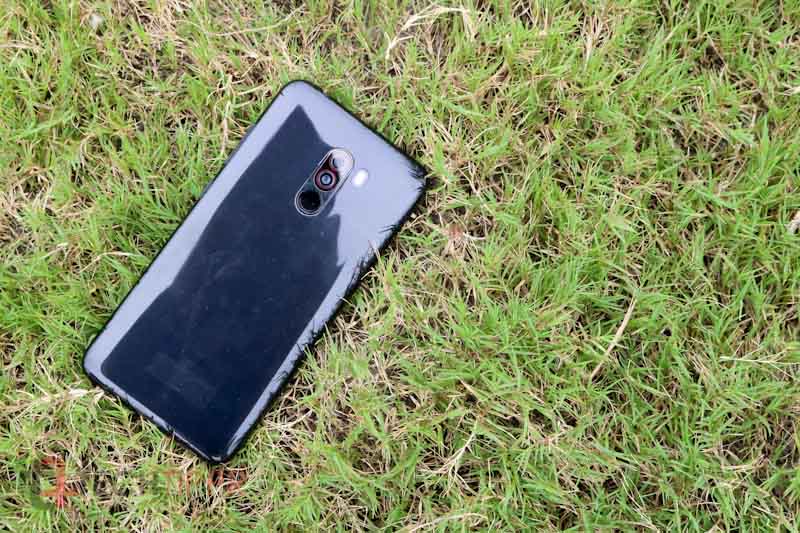
I am using the black translucent case that came with Poco F1 in the box, it turns the grey back of the Poco F1 smartphone into the Shiny black back, and I am actually loving the look and feel of the case.
And another thing which I was sceptical about, was the Notch, which many reviews was tagged as an ugly looking Notch. Well, in my opinion, all the notches are ugly the matter which smartphone they are on.
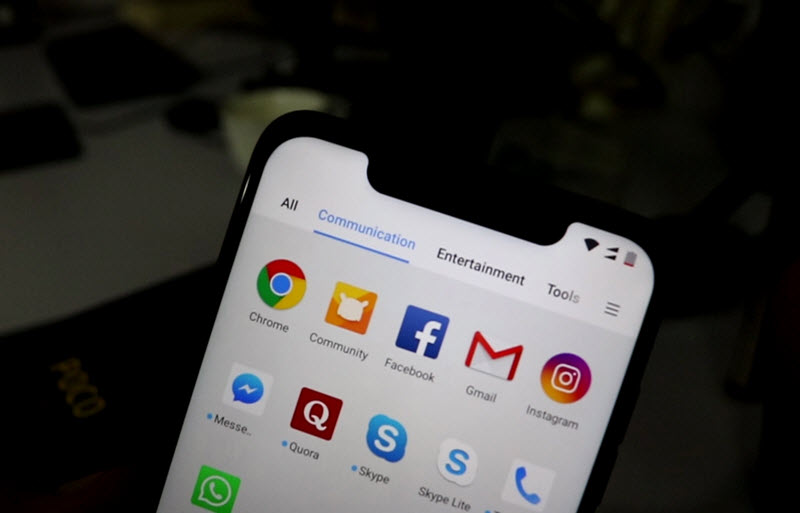
Some have implemented it nicely while others have not, and if you feel the xiaomi Poco F1 has not implemented is nice, you can turn it off from the settings.
Surely, turning it off will not make it unnoticeable as it will be on a Smartphone with OLED screen. But you can surely make it go away if you don’t like it that much.
The reason it is there is that, there is an infrared sensor for the face unlock feature to work which works pretty well even in pitch dark conditions. It is funny how Apple advertised their face unlock feature on the iPhone, which a lot of people talk about so much, but it is now just any other feature on a smartphone.
When you start using the face unlock and appreciate how fast it is, remember that the Notch has housed an infrared sensor for it to work.
You will have to make small changes in your daily usage patterns, because, now, you will have to swipe down to the notification panel to give any notifications since there is no room to show notifications.

There is just a small space to show time on the left-hand side and battery and network signal on the right-hand side.
These are a few small trade-offs that you will have to make if you want to buy this Smartphone
Also, the majority of the people would be using the smartphone with a case, so I don’t see any reason to crib about not having a metallic body at this price.
If you care too much about the premium quality of a smartphone, you have got a few options to buy one in the similar price range, do smartphones have their own way of doing the cost cutting using a low powered processor.
It isn’t will make sense to buy the Poco F1 smartphone if you want to show off your smartphone, and you are actually not a heavy user to make the most of the Snapdragon 845 Chipset.
Let’s talk about the camera performance
I got it delivered on the day I had a flight to catch to Goa, so I spent two days relying on the camera of the Poco F1.
I used the smartphone in almost every condition, and like I said in my shorter review, the dual camera setup of 12MP + 5MP on the back is pretty impressive.
The 12MP primary sensor has a f/1.9 aperture, 1.4µm, dual pixel PDAF
While the 5MP is a depth sensor with f/2.0 aperture and 1.12µm.
The user interface of the camera app is pretty much like it is on every other xiaomi smartphone, there is a portrait mode, which makes the use of the 5MP depth sensor to get blurred background photos, it does the job well when the light is sufficient in your outdoors, and the subject is not far away.
I did not get accurate results in low lighting or indoor conditions, but the photos came out really well with some minor edits.
There is an AI (Artificial Intelligence) mode, which has a brain of its own and tries to balance out the colours to make it more like the real scene.
I preferred taking photos without turning on the AI mode because it feels like it adds a filter to the photos without giving me any options to do it, so it is better to click photos without this mode and then later choose a filter of your choice, Google Photos has many of them, or you can use any other photo editing app.
Photos Taken from Xioami Poco F1 (Indoors)
When clicked photos in the standard mode without any of the gimmick feature turned on, the photos came out really well both indoors and outdoors.
There is no reason to compare this camera with the other flagship smartphones that cost double or three times more than what this Smartphone is, but if you are coming from a budget smartphone or maybe even from a smartphone in the similar price range, you will be impressed with the dual camera set up of the Poco F1.
The front camera of the Poco F1 is 20mp with f/2.0, 0.9µm, but is not as impressive as the other two cameras, which is quite a universal thing for all the smartphones.
The photos taken from the front cameras are sharper and of good quality but the colour reproduction is like of any of any other front camera on Xiaomi smartphone, the same sky is blue one captured through the back camera, and is white when taken from the front camera.
The f / 1.8 aperture also make the photos brighter making the camera hard to capture details and differentiate between the objects.
When it comes to video recording, both the front and back camera are capable of recording full HD videos, while you can also shoot in 4K using the back camera.
You can also shoot slow-mo videos in higher frame rates, which is 120FPS for 1080p while 240FPS for 720p.
To shoot in higher frame rates you need to use the slow-mo feature since the standard recording is done at 30fps irrespective of the resolution you choose, it would have been great if there was a feature to record in higher frame rates in normal mode.
There is no Optical ImageStabilization, which has been highlighted in the reviews of many critics, but the Electronic Image Stabilization works pretty well to stabilize the videos. It’s only available for the primary camera.
Optical ImageStabilization might be one of the key flagship features which is not available in the Poco F1 smartphone, but again, the Electronic ImageStabilization works pretty well.
Here is a cinematic video shot a Beach in Goa
I haven’t I really short a blog using the Poco F1 and I was quite impressed with the Video Stabilization
The microphone is also good, the quality of which you can check in the video shared on our YouTube channel.
Let’s talk about specifications and Hardware performance
Apart from having a Snapdragon 845 Chipset, which almost everyone is aware of, there is a lot on the specs sheet to be impressed.
Such as Adreno 630 GPU, 6 GB of RAM, even on the base variant, liquid cooling Technology, and a 4000mAh battery with Quick Charge 3.0 support.
Areas where the cost setting is apparent
- The build quality as we have talked about above,
- The display, which is an LCD panel, not that bad, but mostly all the flagships offer OLED,
- Not thought out design as some people find the display of the smartphone to be
- Asymmetrical, meaning all the four corners or edges are not alike,
- The Gorilla glass used on the screen is Class 3 while the other flagships using Class 5.
This might be a few areas where is Xioami decided to do the cost cutting but it doesn’t really matter to the majority of people, especially in India, where people are more concerned about the Chipset, the Battery or Camera, because, a slow mobile phone, low battery, and poor camera, are few of the most common complaints we have got for the smartphones.
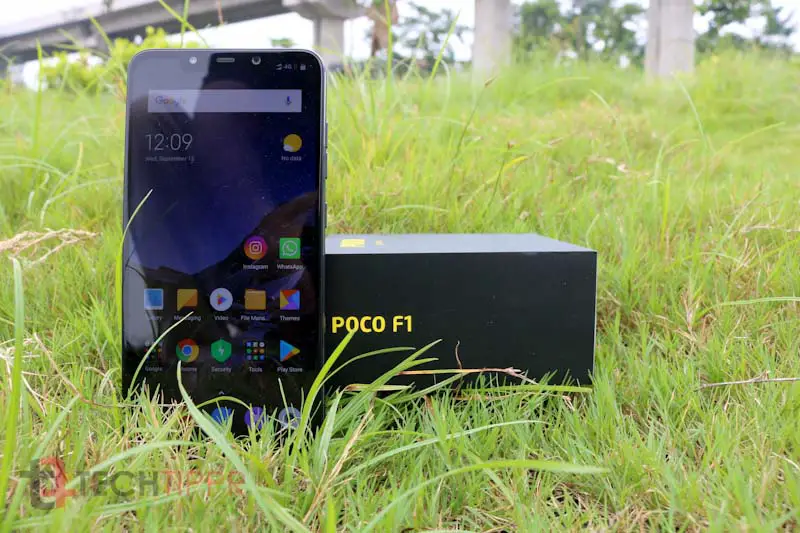
I think is saturation point has come for the smartphones in terms of how powerful they should be. I am coming to the Poco F1 from RealMe 1, so I find the smartphone to be extremely fast, and sometimes I feel that I don’t actually need a phone that fast.
Maybe I’ll get used to it with time, but I don’t think, the majority of the people would require to go beyond this.
The smartphone that I am using right now is 6 GB RAM and 120 GB internal storage, I came back home with more than 300 photos and 200 short video clips for the vlog, and they were still 101 GB of storage space left. (My variant is 6GB RAM/ 120GB Storage)
Which means, even the base variant with 6GB Ram and 64GB internal storage is more than enough for the majority of the people. Also, the price of the base variant is very attractive at Rs 21,000, but is a little harder to get the hands-on considering the popularity of a xiaomi smartphone and their flash sales is directly proportional.
With 6GB of RAM, there is no limit on how many apps can run in the background, I went back to the 11th or 12th app it was right there where I left it.
And when I went back to the Google Chrome where I had a few that’s open, the information was preserved on each of the tabs, and they did not have to reload.
Switching between my most recent searches Twitter Facebook WhatsApp and Instagram, there is no load time between them, all thanks to the 6 GB RAM
Ability to run more apps in the background is a great thing for productivity and multitasking but it also means that it will be consuming power and most likely to drain your battery is much faster.
Thankfully, there is a 4000aAh battery to support it and can last up to a day and a half even with heavy to moderate usage.
On my trip when I was constantly outside with my screen brightness turned on to 100% in taking videos photos every few minutes it lasted till night, so I charged at every night and I was good to go for the entire day.
While I don’t plan to be on a vacation forever, it would mean that the smartphone is going to last more than a day with moderate usage.
So when I am back home and charge my phone, it lasted for one day and 4 hours with 11 hours of screen time, which included, watching a few videos on YouTube on Wi-Fi connection, chit-chatting with friends and family on instant messaging apps posting stories on Instagram in replying to spam emails.
And like I said while doing all these things I did not feel these Xioami Poco F1 getting slow down and the phone is getting heated up.
I am not much of a gamer, so I have not tested the smartphone to its full capacity, but I edited a small video clip on the smartphone, which is also a highly resource intensive task, which the Xiaomi Poco F1 was able to handle without getting heated up.
Even when charged with the Quick Charge 3.0 fast charger provided, which makes charging faster.
- It took 1 Hour to charge the smartphone from 0 to 60% when charged switched off.
- It took 1 Hour & 20 Minutes 0 to 80% when charged switch off.
- It took 1 Hour & 50 Minutes to reach 0 to 99% when charged switched off.
Xiaomi has been putting a 4000mAh battery in even there redmi smartphones which is a budget series, but having 4000mAh battery on a smartphone with a Snapdragon 845 Chipset is an amazing experience.
And this is why I think the launch of Xiaomi Poco F1 is the beginning of a new era where the maid range smartphones can be as powerful as the flagship ones.
Also, the flagship smartphone manufacturers can work on improving other aspects of innovating, such as the newly launched Smartphones from Vivo and Oppo with motorized cameras and in- display fingerprint sensors.
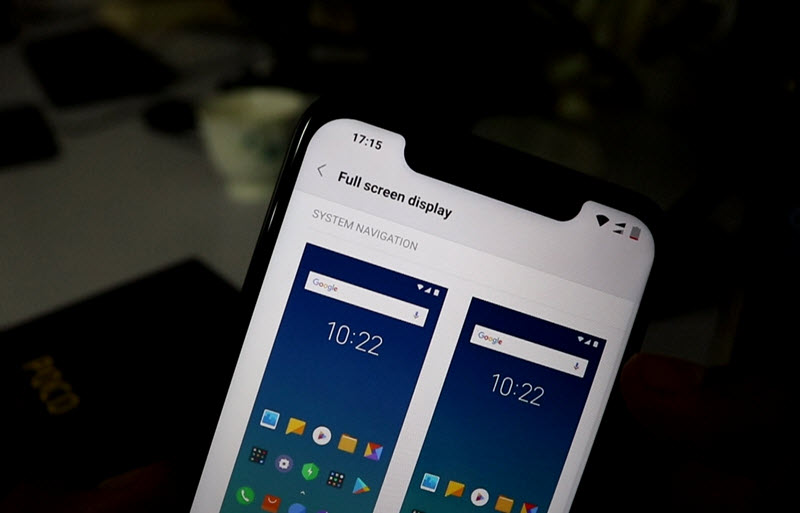
Xiaomi used a modified version of MIUI on the Poco F1 and called it Poco Launcher, which brings in the app drawer, which was never apart of MIUI since it always tried to mimic iOS.
You can read about the interesting features and offerings by the Poco launcher
Now that we have come to the end of this review, I would like to say that there is no room to crib about the non-existing features in the xiaomi Poko F1.
If it is not the smartphone that you are looking to buy, you can still be happy about its launch because it will come out a way for more competition so that other smartphone companies can also come up with great devices at affordable prices to offers super value mid-range smartphones.






















